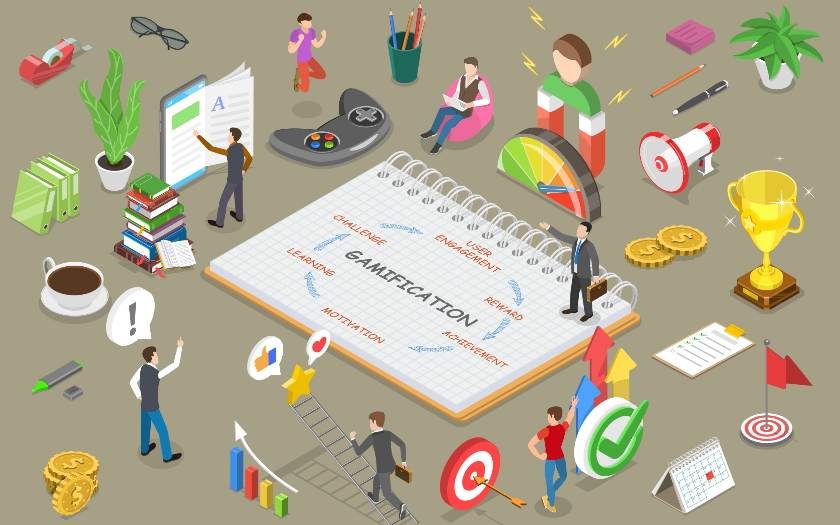Video game players earn in-game rewards for overcoming challenges or defeating opponents, which drives them to continue playing. In a bid to boost the conversion rate of prospective shoppers into customers, improve engagement and increase retention, this strategy of encouraging someone to act in a specific fashion in return for gaining rewards has also been applied to the world of ecommerce. Adding fun to the equation with gamification may well be the solution needed to overcome issues such as cart abandonment, attracting loyalty, and create truly amazing unboxing experiences.
Gamification is shown to work as it entices what is in our very human DNA: to be competitive, to chase quick rewards and recognition and, ultimately, to win. Here are some ways companies can incorporate gamification into their customer experience models.
Referral Contests
Referral contests are often viewed as a gateway strategy to introduce gamification into your business as it is easy to execute and simple enough to understand. It works by incentivizing existing users with special discounts or prizes to get to convince their friends and family to sign up for your loyalty program or newsletter. In some cases, both the referrer and referee will be challenged to hit certain achievements or milestones in exchange for a reward. If implemented successfully, this form of gamification will increase your customer base, solidify customer loyalty, and enable shoppers to continue engaging with your business for a long time, thus, resulting in both parties being able to reap the accompanying benefits.
Loyalty Programs
Developing a strategy that encourages customers to keep coming back is vital as repeat purchases increase a business’ going concern. Putting a loyalty program into place is one of the sure-fire ways to successfully build brand loyalty and increase customer retention. In a nutshell, loyalty programs reward customers with points that accumulate over time with each purchase made and can be exchanged to redeem certain rewards, discounts or goodies.
Appreciation begets loyalty and customers are more likely to stay loyal to a business if they have fostered a positive kinship towards said business. Loyalty points can be awarded in a steady fashion such as 5 points for every coffee purchased or in a mysterious way, such as the use of a spinning wheel, in which customers will not know what they will be getting when they spin. With big prizes on the line, this form of gamification may be more exciting to them. Of course, winning big will do wonders to further strengthen their loyalty.
Promotional Contests
Another simple yet enticing form of gamification is running promotions on your website where contestants key in their personal contact information in exchange for a shot at winning some sort of prize. While this method requires a little more in terms of investment compared to referral contests, it is certainly more alluring to the customer. Retailers should think of this as a marketing expense in which they are investing to acquire customer data that can be used in future marketing campaigns and potentially boost sales.
A variation of this is the survey contest. Essentially, participants will answer a number of simple questions that provide the retailers with insight into their personalities, preferences, habits and lifestyle, among others. The theme of such contests could be based on what’s trending such as movies, TV-shows, music and other pop-cultural phenomenon or seasonal and timeless topics such as personality or spirit animal quizzes. Based on their answers, their results will be matched to a recommended product that is suited to their background, budget and proclivities.
Tiered Programs
Tiered programs are indubitably one of the most effective types of gamification methods used by online retailers as they promote repeat business and reward customers the more they spend by offering increasingly appealing and attractive goodies. Most often, there is a cap on the time frame in which these goodies are available, and therefore reducing the time it takes for a customer to decide on whether to make their purchase.
The basic impulse behind this marketing strategy delves into the customer’s psyche of desiring to unlock more rewards with each consecutive purchase. This is especially enticing when a customer is trying to collect and complete an entire set of freebies. Throw in a couple of bonus discounts and additional loyalty points that can be used to redeem limited edition goodies into the mix, and the irresistibility of such an offer becomes all the more alluring.
No one can truly qualify or quantify how a customer reaches the decision to make a purchase. What is known, however, is that they are universally more likely to buy if they think they will lose out by not acting. Gamification is one of the tools that can help online retailers lead shoppers into making an on-the-spot decision to buy. Therefore, in an ever increasingly competitive online retail space, gamification may just be the Hail Mary pass ecommerce businesses are looking to ramp up sales, gain traction, increase customer interest, consolidate loyalty and encourage repeat spending.

